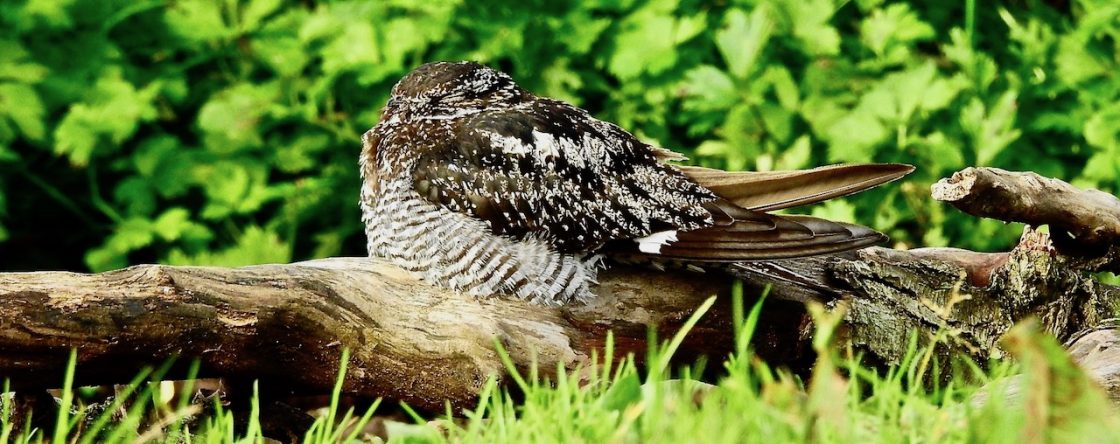Even with the wind clearly in the wrong direction you should never miss an opportunity to visit Spurn, but it was tough going today searching for goodies from Sammy’s Point to the Warren and back.
Neill “Shangri-La” Hunt picked me, Alan Wright and Andy Pryce up in the godless hours and we sped cross country, so that we were stumbling around the lane at Easington Cemetery by 0830 in a strengthening south westerly that allowed startlingly white Med Gulls to sail over the fields.
It was quiet, and while Sammy’s Point had 1 Yellow Browed Warbler, Spotted Flycatcher, Greater ‘Pecker, Whitethroat, Goldcrest, 2 Whimbrel, Golden Plover and overhead Skylarks and Siskins, none were showing particularly well (apart from the waders), and after meeting up with more windblasted visitors from our side of the Great Divide, we pushed on to Spurn proper to check the area between Kilnsea and the Warren for the rest of the day.
There were Yellow Browed Warblers calling by the Crown and Anchor and in Church Field, but as they were hiding in the strong south westerly, it was more fun to say “howdy” to everyone’s favourite birder, Andy Roadhouse (not really relaxing after completing his masterwork, “The Birds of Spurn”) again as we renewed our annual subscriptions to “Friends of Spurn” – if you haven’t signed up, you should, it’s a great deal and the support helps the best mainland birding site in the UK.
Walking down to the Canal Zone the sun broke through a bit and up to 11 Whinchats were zipping about the fenceline, albeit distantly.
A few Yellow Wags went through with a scattering of hirundines, but it was quiet and sunny spell Commas, Red Admirals and Migrant Hawkers got more attention than they should have.
The hide at the Canal Zone was packed, yet the pool was hardly jumping, apart from a ridiculously close Common Snipe, more Whinchats and Little Grebes.
A seawatch was a good opportunity to take the weight off, and a handful of young Gannets (birds of the year), Common Scoter, Teal, Fulmar, and a Red throated Diver went through as we scanned the waves.
Then we headed to the Crown and Anchor for a restorative in the car park, while listening to an invisible Yellow Browed Warbler and a male Blackcap gorged on elderberries.
Church Field had Yellow Browed too (inevitably keeping out of sight) and a Willow Warbler fluttering around the stonking great Heligoland trap there.
The cruise back over the Pennines was predictably subdued – but there will be other days at Spurn when the wind will be in our favour and it will feel like the best place on earth again.
Thanks all, over and out.










Great to see you guys again John, one of the reasons I love Spurn so much is because of how friendly everyone is to each other!
LikeLiked by 1 person
Nothing wrong with turning your attention to the insects when the birdies aren’t playing out. In the warmth of Friday last our garden had ten Red Admirals on the Michaelmas Daisies, along with Large and Small Whites, two Painted Ladies and a superb box-fresh Comma, the latter two species being firsts for the garden. Seems to have a been a good year for Painted Ladies.
Tony
LikeLiked by 1 person
Autumn is certainly on its way and at RSPB Leighton Moss nature reserve in Silverdale, that means some of its most secretive residents – the bearded reedlings, are coming out of hiding, offering visitors a greater chance of spotting these elusive birds.
Leighton Moss is the largest reedbed in North West England, home to rare and special wildlife. Bearded reedlings, also known as bearded tits, are very uncommon and rely on this special environment to live in. They first began breeding at the reserve in 1973 and their numbers have been closely monitored by dedicated staff and volunteers ever since.
Earlier this year, following stormy weather that flooded the reserve, it was feared the bearded reedling population may have declined. However, through ringing studies, where young birds have colour coded leg rings fitted, staff at the nature reserve have found that it has been another good year for these secretive birds.
Kevin Kelly, Visitor Operations Manager at RSPB Leighton Moss and Morecambe Bay nature reserve said: “We have caught or seen nine adult males and ten adult females so far this summer, as well as fitted colour rings to 22 baby birds and nine other young bearded tits. This shows that there have been plenty of successful breeding attempts despite the challenging weather conditions last winter.”
Visitors can look for bearded reedlings at Leighton Moss any day in October but for the best chance to see these rare birds feeding on the grit trays, take a walk down the Causeway between 9.30 am-12 pm.
For more information on other wildlife and events at Leighton Moss, visit http://www.rspb.org.uk/leightonmoss.
LikeLike
Cetti’s Warbler calling this morning by the footpath south from the Shrimpers roundabout (the Velvet trail?), just after the second footbridge. Possibly two, but more likely one mobile bird.
LikeLike